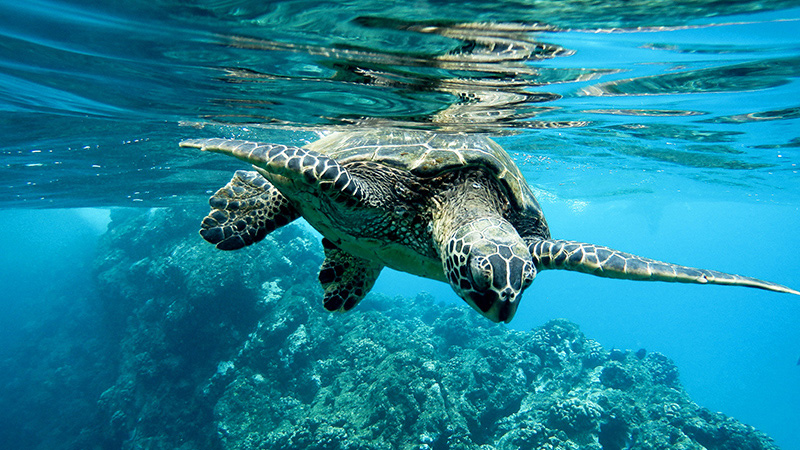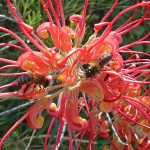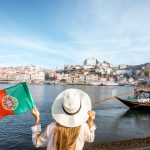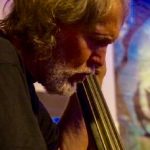Sophie Sadler interviews Èlio Vicente – marine biologist and director of external affairs at Zoomarine – to find out more about how an Algarve tourist attraction is making a huge contribution to marine conservation.
In 2019, the Zoomarine theme park welcomed a record 625,000 visitors in one year – what many visitors don’t realise is that their entrance tickets are paying for the conservation and preservation of life of the oceans, species and habitats.
The park opened on 3 August, 1991, and is located in Guia, in Albufeira. Élio went to work there straight out of his Marine Biology Course at Faro University – two months before it opened. In 1999, he became zoological director until in 2002 he was asked to focus on science and education. Now as director of the Rehabilitation Centre and director of external affairs, he tells me he can work some days from home. As a result, we chat on a video call from his home office, where he sits in front of a vast wall of books.
I am assuming he has read all the books on his shelf as his knowledge is extensive. Yet it is his passion for the environment and marine conservation that is most striking. He talks at break-neck speed about his endeavours to the extent that it is hard to sum up everything in this short article – I would need to write a thesis – but I can imagine the devastating changes to marine life he must have seen in the 30 years since he qualified as one of the Algarve’s first graduates in marine biology.
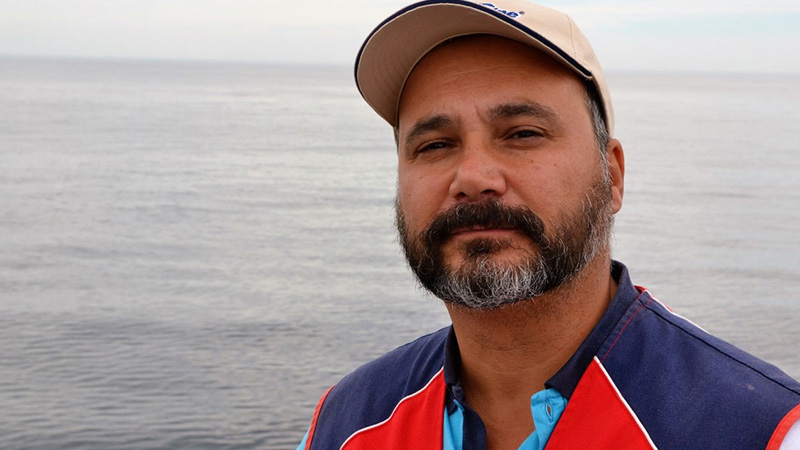
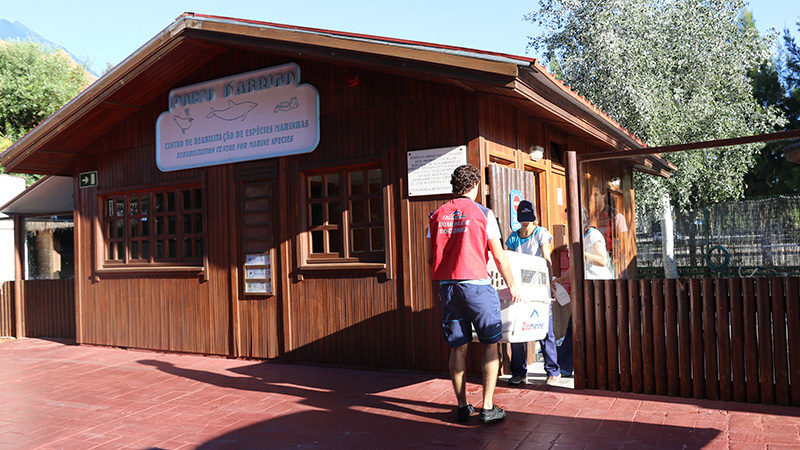
Despite the jaw-dropping shows, ever-increasing rides and water park, the “Together we Protect” mantra has never been overlooked. When Zoomarine opened its Rehabilitation Centre for Marine Species, the first in Portugal, they were confident that the Portuguese government would follow suit and build more in Central and Northern Portugal – they never did. For eight years Zoomarine’s facility was the only centre for marine rehabilitation in Portugal – there is now one more. “I am very proud that we stuck to the fundamental ideal,” Èlio tells me.
In fact, when the Portuguese government started a programme a year ago to support rehabilitation centres, Zoomarine decided not to apply as it felt that it was more important that the money went to NGOs that could not support themselves and receive visitors.
Inevitably the park can be subject to negative publicity, normally on social media about the ethics of dolphins performing to the public, or Zoomarine taking animals out of the wild to put in the zoo. “Our rehabilitation centre never was and never will be a recruitment centre. We never keep animals from the wild. If animals are brought to us for rehabilitation and they are too ill to be released we insist that the Portuguese government find it another home. It is important we do this so that people understand we are not helping the animal because we want to keep it.”
He is philosophical about these slurs, telling me, “criticism is a good thing”. Even fake news like an accusation that they take out the dolphins’ teeth to stop them biting? “Dolphins don’t bite, they are not dogs,” he says.
Rehabilitation is incredibly expensive. One rescued wild dolphin needs two or three people in the pool with it every minute of the day if it is sick – which equates to a team of 30 per day until it is fit to swim alone again. The medication for a 600-kilo mammal including antibiotics can be thousands per day.
Zoomarine’s Porto d’Abrigo (Rehabilitation Centre for Marine Species) was founded in 1997 and has had remarkable success in returning animals to the wild. Regular Tomorrow readers may recall the leatherback turtle Quinas, rescued by Zoomarine from fishing nets off Meia Praia beach in 2019. After being released into the ocean he was last tracked travelling 45kms per day off the Canary Islands in a busy ferry lane. He could have died but Élio is optimistic that the tracking device just fell off or lost contact with the satellite.
Another amazing success was their rehabilitation of two turtles that had been in captivity – one at at Funchal’s Municipal Aquarium and the other at Aquário Vasco da Gama, Lisbon – for more than 30 years. After several years of behavioural rehabilitation, they were released back into the wild, one with an amputated flipper. Despite this, the turtle swam the Atlantic and reached Brazil. Élio’s team had proved that animals can be retrained to survive in the wild after this long in captivity and that amputated animals can get into the same migration routes and swim at the same rate as intact animals.
Élio says one of the keys to their success is to make the animals afraid of humans, which is why they can never be on display, “We never give them any positive associations with humans, so they don’t see us give them food and we never pet them.” The petting is reserved for the animals you witness in the shows all of whom have been born in captivity.
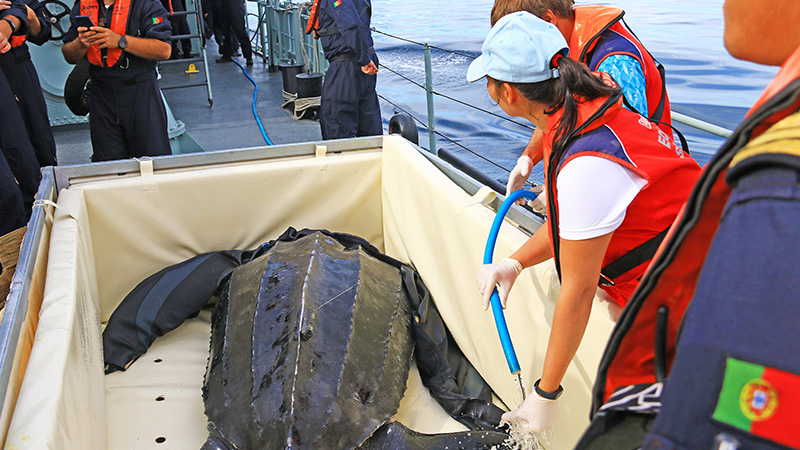
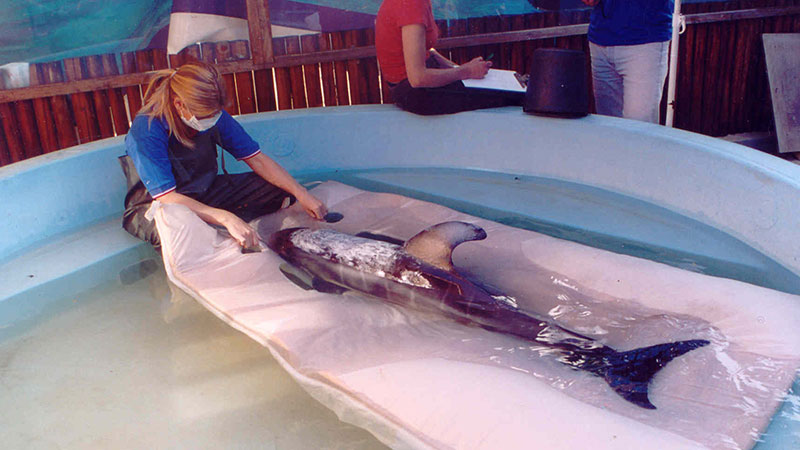
Zoomarine established the first team of specialised staff on marine mammals in the Algarve – initially from Brazil – where the company had another park. Since then they have become world leaders in science, education, conservation and training. In 2006 and 2008, Zoomarine hosted a conference on emergency protocols and response to oil spills in order to ensure a network of support to help marine life affected by such an eventuality. “This month we were one of four speakers on an international webinar on this subject,” explains Élio.
This year, Zoomarine entered into a consortium together with Águas de Algarve and Quercus, to start trying to preserve the fragile fresh fish populations in rivers and small lakes in Serra de Monchique and other mountain waterways. They are creating a breeding programme to create insurance populations and reinforce existing populations. The eight year endeavour is named Falanges.
Other initiatives include their beach cleans which always happen on the second Sunday in May, the weekend after Portuguese Mother’s Day, which they have dubbed Mother Nature’s Day. Their next will be in May 2022. They also reserve the park one day a year for special needs children and host a Festa dos Sorrisos, which this year was held on 7 October.
Operação Montanha Verde, in 2019, saw over 4,147 volunteers (4,900 registered) planting a record 42,000 trees in eight Algarve municipalities. Every year they aim to double the number of trees planted with the aim to offset carbon emissions, reverse the effect of the devastating wildfires and engage with schoolchildren to instil a sense of environmental mindfulness in future generations.
Élio excitedly tells me that in 2023 they are looking to double this to 84,000 trees in all 16 municipalities, some of which now don’t actually have any more space to plant more trees!
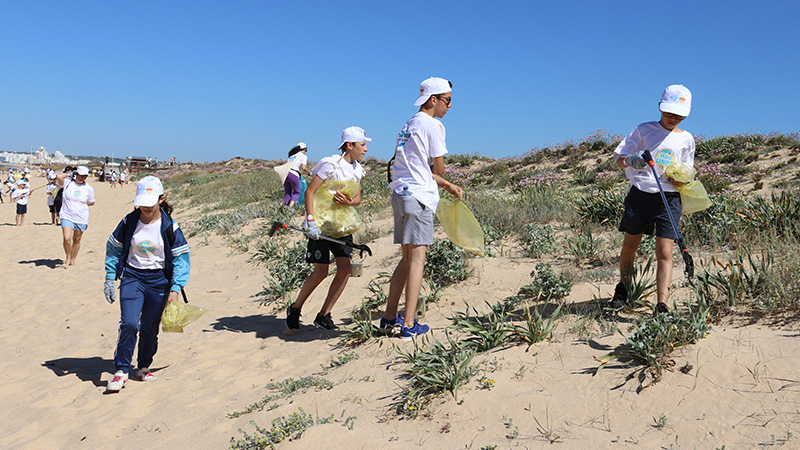
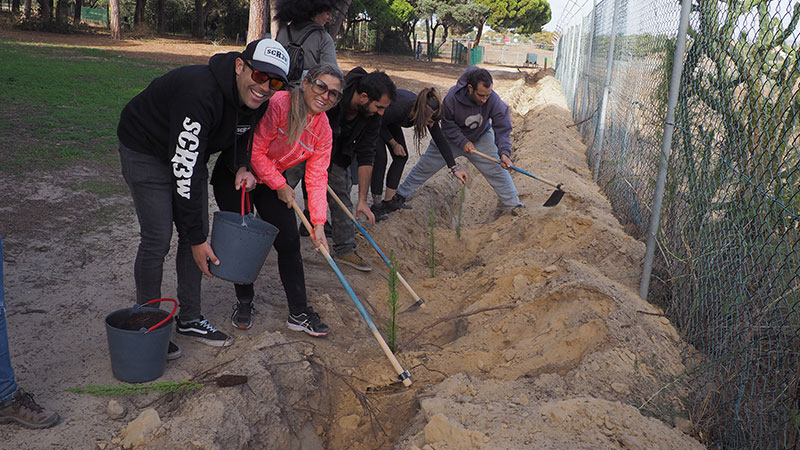
I want to know if Élio is excited by the potential for change that may come out of COP26. He doesn’t look convinced, “These conferences tend to have too many politicians and not enough scientists. Politicians are governed by borders and nature doesn’t have borders. Unless we break down these man-made boundaries we will not succeed.”
The one thing that has stuck in my mind since talking to Élio is his despair over the plight of the Vaquita that lives in the Gulf of California. A cetacean and a member of the dolphin family, it is all but extinct, having been wiped out by gillnet fishing. There are only 10 left in the wild, so not a large enough gene pool for them to breed successfully, Élio reflects sadly, “everyone loves dolphins, yet in our lifetime we have wiped out the Baiji (a river dolphin that lived in Asia, and became extinct around 10 years ago) – and now we are doing the same with the Vaquita. What hope is there for the not so cute species that don’t have media focus?”
The threat of extinction of many species is a depressing reality; however, from this interview with Élio, I truly believe Zoomarine has had an important and progressive impact on marine conservation in Europe and can be proud of its contribution to date.
